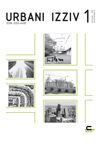Private space open to the public as an addition to the urban public space network
Private space open to the public as an addition to the urban public space network
Author(s): Lilijana Jankovič GrobelšekSubject(s): Social Sciences
Published by: Urbanistični inštitut Republike Slovenije
Keywords: space; private space open to the public; public use; quality of life; healthy living environment
Summary/Abstract: One of the most important priorities of (sustainable) urban planning is to ensure the quality of life and a healthy living environment. Both are primarily regulated as part of the public space network – that is, in city parks, squares, streets, forests, river banks and so on. In addition to public space, which is public in terms of ownership and use, private space open to the public in cities is becoming increasingly important. This is privately owned space in public use that comprises private structures and their external areas such as green areas, paved courtyards, atriums, arcades, squares and streets at shopping centres and movie theatres. The network of private space open to the public (PSOP) in cities is being created spontaneously and in line with the (economic) interests of its owners. The findings presented in this article show that PSOP could complement and enrich the city’s public space network to a larger extent than it currently does, which would enable it to have a greater influence on ensuring people’s quality of life and health. The first precondition for this is a well organized ownership and physical structure of the public space network that is linked to PSOPs. By analogy with Slovenian hiking trails, which already form an extensive network of PSOP outside the cities, the planned development of a network of PSOP is suggested for cities. The first step can be completely concrete: defining these spaces as a special spatial category that can be introduced to local urban planning practice – that is, to land subdivision plans, which are part of spatial plans. The next logical step would be the gradual enforcement of this through regulations.
Journal: Urbani izziv
- Issue Year: 23/2012
- Issue No: 1
- Page Range: 101-111
- Page Count: 11
- Language: English

